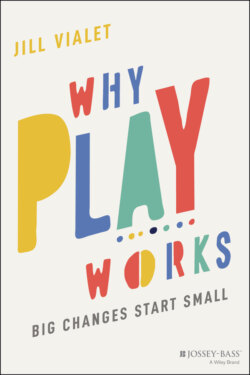Читать книгу Why Play Works - Jill Vialet - Страница 16
A Brief Tour of Play Theory
ОглавлениеIn the early 1900s, play theorists proposed the idea that children build up an excess of energy and that active play is required to work off that surplus. And although play theory has come to recognize a far greater complexity, this understanding is still very commonly held, especially in schools. Initially suggested by Friedrich von Schiller in the 18th century and expanded on by the psychologist Herbert Spencer in 1873, the idea is that our evolution from hunter‐gatherers has left us with excess energy that makes prolonged sitting a challenge.
For children's play, at least, Anthony Pellegrini and John Evans refuted this understanding in a 1997 article entitled “Surplus Energy Theory: An Enduring but Inadequate Justification for school Break‐Time.”8 Evans and Pellegrini note that the argument is physiologically unsound and points to children's willingness to play beyond exhaustion—after their “surplus energy” is spent—as well as children's willingness to opt to stay inside when given the choice of quiet sedentary activities—hinting toward a lack of “surplus energy”—as evidence. Further, as I have frequently witnessed in schools prior to Playworks programming, it is not uncommon for only a few children to engage in “moderate to vigorous” physical activity during free play. Clearly not all kids are bursting to release some energy.
Pellegrini and Evans argue that the root of children's restlessness in class after extended periods of sitting reflects not the surplus energy theory but the novelty theory. The novelty theory suggests that students become bored with the activities they are engaged with and become inattentive in anticipation of doing something different, such as getting to go outside. Playing represents the opportunity to do something new—something potentially self‐defined, active, and spontaneous. Pellegrini and Evans conclude the article with an emphatic endorsement of the importance of play, arguing that it is essential that we see play as more than just a break from work to prepare for more work. What is lost in reducing play to simply a way of releasing energy is the understanding of play as an opportunity for children to use their creativity while developing their imagination, dexterity, and physical, cognitive, and emotional strength.
Perhaps the biggest developments in play theory happened in the 1960s, when Swiss psychologist Jean Piaget looked at the connection between children's play and their stages of development, bucketing play into four different types: functional, constructive, symbolic/fantasy, and games with rules.9 Piaget and his followers were somewhat dismissive of the final category, games with rules because of their reliance on someone to be an arbitrator of the rules (often a grown‐up), and symbolic/fantasy play was held up as its highest form. Because every area of study needs conflict and drama, there was, and continues to be, debate about this. The aforementioned play theorist Brian Sutton‐Smith offered a critique of Piaget's theory and later wrote a book called The Ambiguity of Play, looking not only at the definition of play, but also at the “rhetoric” of play—essentially the ideologies that have been used to prioritize some forms of play over others.10
